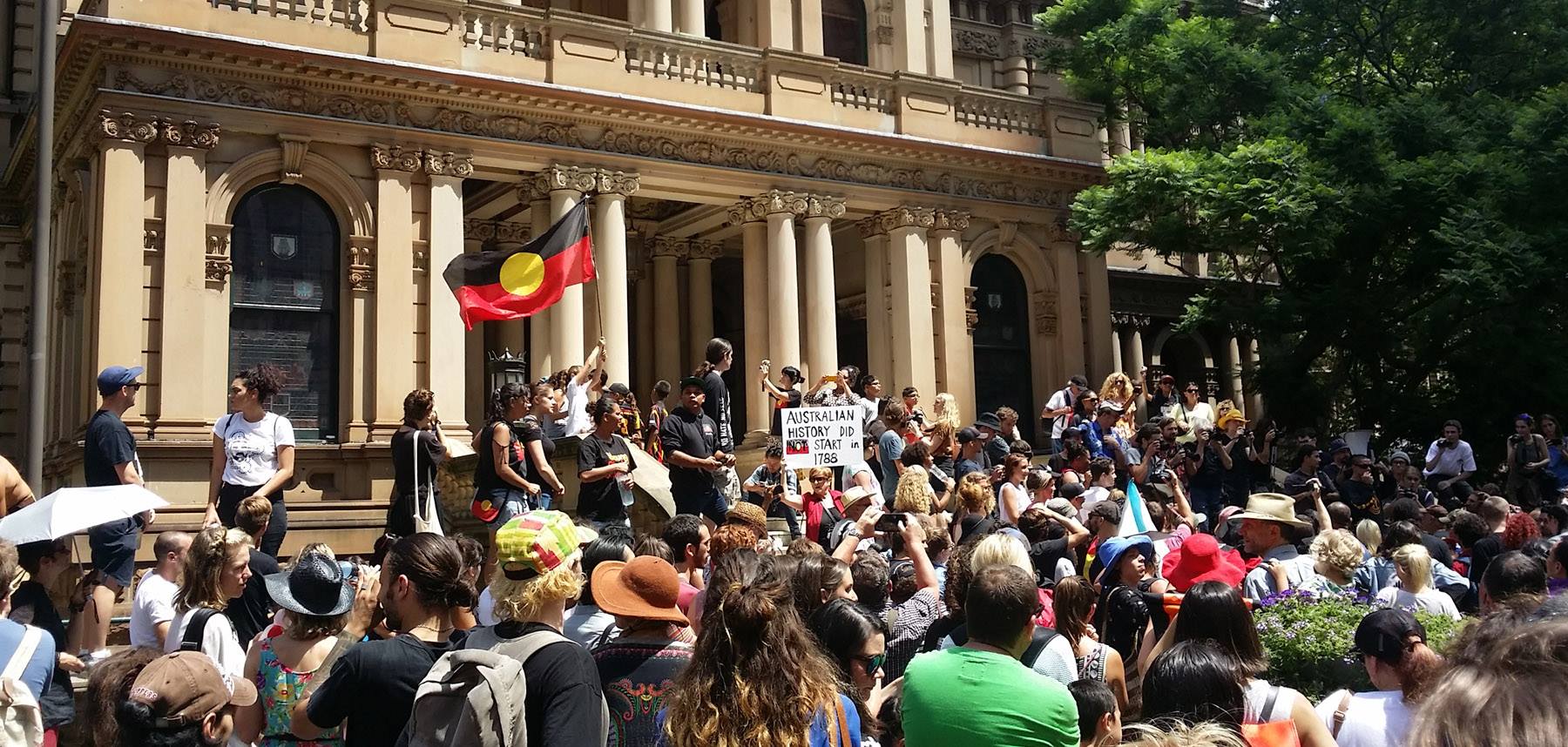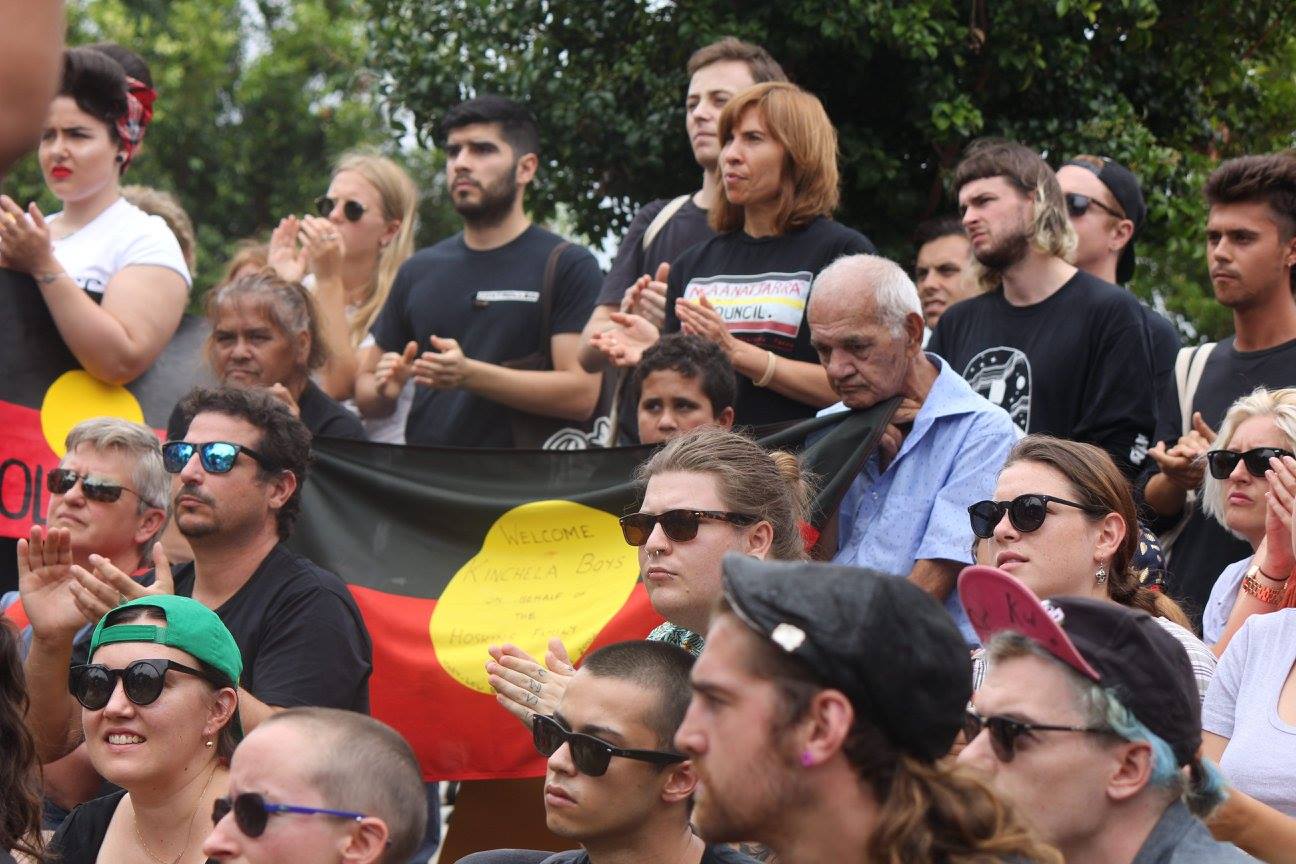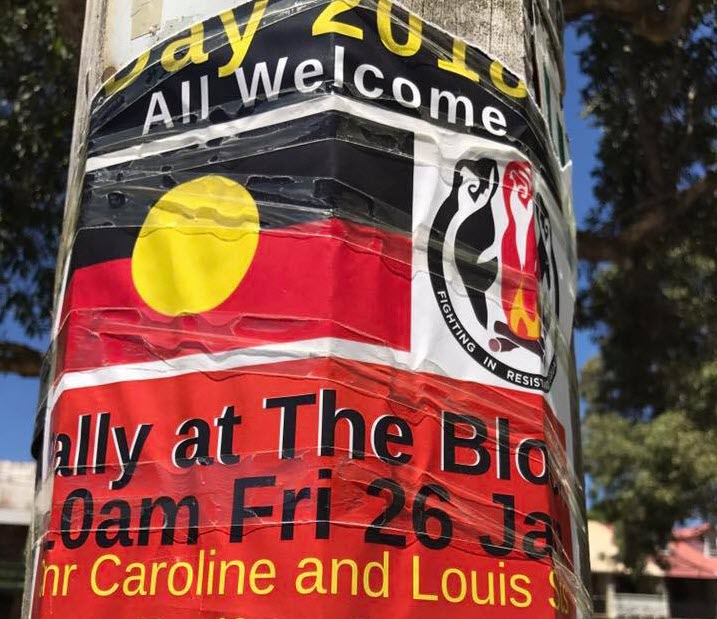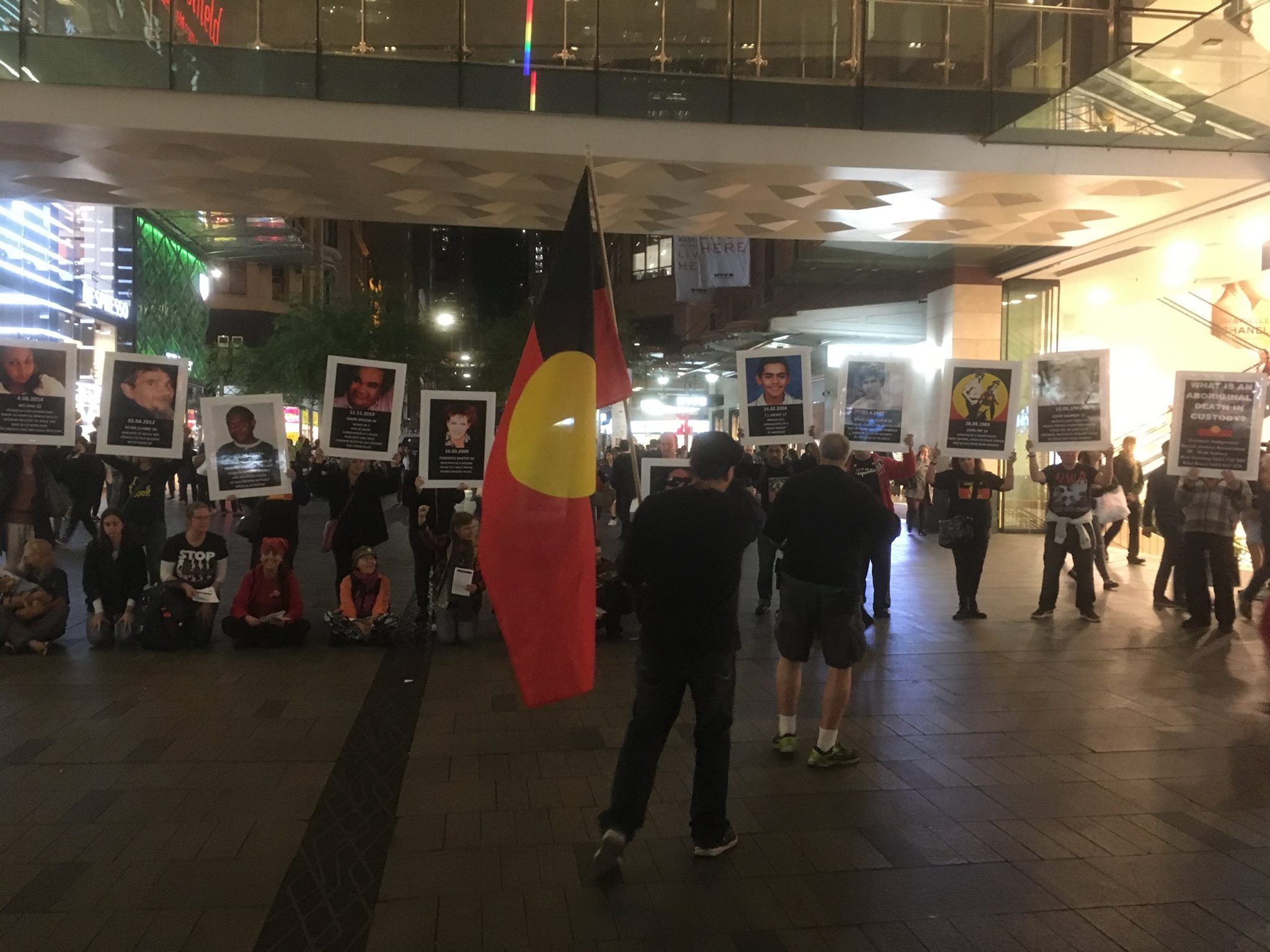Using the power of social media and the collective efforts of several dedicated organisations, organising an event such as the Invasion Day rally is a huge task.
For the past couple of years, a newly formed activist alliance group has taken on this huge project for the Sydney chapter and are seeing results that are driving change and attracting the attention of those in power.
Laura Lyons and her daughter Bianca are the driving force behind (FIRE) an organisation that came together in 2016 through different Aboriginal organisations. Their aim is to work in resistance against all types of oppression, not just the oppression of Aboriginal and Torres Strait Islander people.
Bidjara activist, writer and poet Uncle Ken Canning, an active member of FIRE, told NITV that he came onboard to support the organisation as he thought the concept of many organisations coming and working together was brilliant.
"I was working with Indigenous Social Justice Association () during the time that FIRE was formed and I thought, 'Yeah! if you are going to run a Human Rights Day and go further, instead of having just Aboriginal organisations, let's have all oppressed people come on board, it was a great idea.' It was a great feeling coming together of all these groups that were feeling oppressed." The 2016 Human Rights Day rally organised under the banner of FIRE attracted 2,000 people from the Indigenous, Latina, refugee, Muslim and union communities to name a few. Canning said there was a feeling of satisfaction seeing so many parts of society coming together as one.
The 2016 Human Rights Day rally organised under the banner of FIRE attracted 2,000 people from the Indigenous, Latina, refugee, Muslim and union communities to name a few. Canning said there was a feeling of satisfaction seeing so many parts of society coming together as one.

Sydney Town Hall Invasion Day Rally 2016 (Facebook/Tim Anderson) Source: Facebook/Tim Anderson
"Here we were, Aboriginal and Torres Strait Islanders running this event, fighting oppression for everyone, I thought it had an amazing impact. It showed other oppressed groups, we aren't just complaining for the sake of complaining, we are serious about racism and oppression - wherever it exists we'll get in there."
ISJA along with several other organisations then attracted 6,000 people for their Invasion Day rally. And once FIRE took over in 2017 - over 10,000 people showed up.
But two key ingredients make it successful. Firstly, you have to realise it's a collective effort. You can't assume the role of leadership.
"When you look at trying to organise a rally of this size, a lot of work goes in to it, there are hundreds working behind the scenes. But two key ingredients make it successful. Firstly, you have to realise it's a collective effort. You can't assume the role of leadership." says Canning. Planning has been taking place through informal meetings, often impromptu ones after other rallies, and on a formal level 3-4 months out from the event. FIRE's last meeting attracted 50 supporters.
Planning has been taking place through informal meetings, often impromptu ones after other rallies, and on a formal level 3-4 months out from the event. FIRE's last meeting attracted 50 supporters.

Sydney Invasion Day Rally 2017 (Facebook/Eliza Jane) Source: Facebook/Eliza Jane
Whilst different members may have years or decades of experience, when it comes to working together all of these differences go out the window.
In every community there are activists, they just don't call themselves that. They are nameless and they are also the glue of their communities, fighting for housing, for justice, and for our kids at the grassroots level. They are our real heroes.
"There really can't be any egos, if you want your name written all over it then you are in the wrong place. FIRE has been good in this way, it's been about the collective. If you are wanting to go on an individual trip, you are going to be carrying a lot and it will be a lonely journey."
Some of the biggest costs involved goes into the printing of posters, flyers, recruiting an army of volunteers to circulate them and money to accommodate speakers. FIRE has gratefully accepted the support of the NSW Greens who have covered the costs of printing tens of thousands of posters and flyers - a cost that would have been almost impossible for them to cover on their own.
FIRE has gratefully accepted the support of the NSW Greens who have covered the costs of printing tens of thousands of posters and flyers - a cost that would have been almost impossible for them to cover on their own.

Poster in Sydney for the Sydney Invasion Day Rally Source: Facebook
"We have a dedicated group, mostly made up of younger people who have been out on the streets distributing these posters. They have been running around everywhere, from the North Shore down to Wollongong to Liverpool, the Inner city and to Blue Mountains. One of these volunteers handed out over 500 flyers alone."
Aside from printing and distribution costs, accommodating speakers - a key aspect of the rally- is another area that requires support. "The feedback we have gotten from those that have addressed these large rallies has been that it is very healing. Some [speakers] have come from small communities and whether or not full justice is seen, the ability to share their message and to know that it's heard and valued, beyond the small circle of people that the media inform, has been healing in itself." Having the voices of those from other communities is vital part of a rally and takes a lot of planning. 2018's Invasion Day rally had family members travelling all the way from Boroloola in the Northern Territory and also Kempsey in northern New South Wales who spoke to attendees. They would also go on and speak at , who was a big supporter of 2018's Sydney Invasion Day rally.
Having the voices of those from other communities is vital part of a rally and takes a lot of planning. 2018's Invasion Day rally had family members travelling all the way from Boroloola in the Northern Territory and also Kempsey in northern New South Wales who spoke to attendees. They would also go on and speak at , who was a big supporter of 2018's Sydney Invasion Day rally.

Uncle Ken Canning out front of a FIRE group bringing attention to the continued genocide through deaths in custody Source: Facebook
FIRE organises accomodation and travel for these families, with the majority of this money coming from donations through a buckets that were passed around at a previous rally. Canning says that it's important for those involved with organisations such as FIRE not to receive Government funding, as it is really a conflict of interest, "If the Government give you the money they want to tell you how to drive the bus."
Galvanising through social media campaigns, although effective, takes a lot of time and effort, but is one way that FIRE can somewhat gauge estimated numbers for rallies which ultimately helps to keep volunteers energised. "You can't trust Facebook anymore. My golden rule with Facebook a few years ago was whatever number you saw as 'attending', I always halved and I was usually right. But in 2016, our event page said that 1200 were coming, but nearly 6000 turned up. In 2017 it was under 2000 yet over 10,000 showed up! We can't go off these numbers anymore."
Seeing the rise in numbers of support through social media and turning up at rallies does help to keep the fire going for those that work so hard all year to get an event like this running, though Uncle Ken says that it should already be there, "These things like social media support do help, for sure, though that fire should already be there. If you haven't already got the inspiration to make social change, stay at home."
These things like social media support do help, for sure, though that fire should already be there. If you haven't already got the inspiration to make social change, stay at home.
Canning says that there is nothing particularly special about the movement, and that it is simply a continuum of those that have gone before. "We've got a lot of heroic people. Pemulwuy is a name on many people's lips, but if you go through the history of this country, there is a lot of very well known people - those that were involved in the 1938 Day Of Mourning, people who fought hard to have our rights survive, the Tent Embassy etc."
However it is the unseen and unrecognised that really help to keep activists such as himself motivated. "In every community there are activists, they just don't call themselves that. They are nameless and they are also the glue of their communities, fighting for housing, for justice, and for our kids at the grassroots level. They are our real heroes."
NITV presents a selection of dedicated programming, special events and news highlights with a focus on encouraging greater understanding of Indigenous Australian perspectives on 26 January. Join the conversation #AlwaysWasAlwaysWillBe

